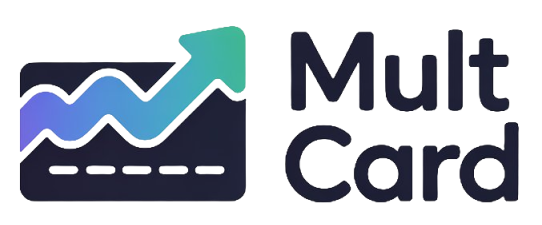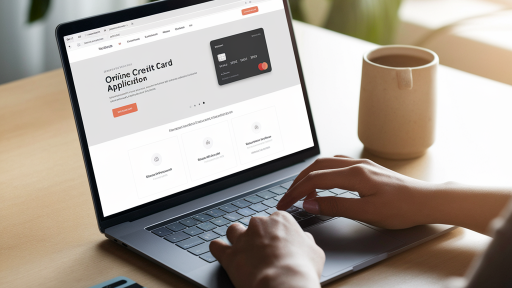Applying for a credit card has never been easier. With just a few clicks, you can submit an application from the comfort of your couch and potentially receive a decision in minutes. This digital convenience has transformed how we access credit, making it faster and more accessible than ever before.
However, this same simplicity can be a double-edged sword. Moving too quickly without proper preparation can lead to rejections, damage to your credit score, or ending up with a card that costs you more than it’s worth. To navigate the process successfully, it’s crucial to be aware of the common pitfalls that trip up many applicants.
Mistake 1: Applying Blindly Without Knowing Your Credit Score
Imagine walking into a job interview without knowing anything about the company or the role. You’d be at a significant disadvantage. Applying for a credit card without knowing your credit score is the financial equivalent. Your credit score is one of the most critical factors lenders use to evaluate your application. It’s a numerical representation of your creditworthiness, and it tells issuers how risky it might be to lend you money.
When you apply without this knowledge, you’re essentially guessing which cards you might qualify for. If you aim too high and apply for a premium card that requires an excellent credit profile, you’re likely to be denied. A denial isn’t just disappointing; it also results in a “hard inquiry” on your credit report, which can temporarily lower your score by a few points. Multiple hard inquiries in a short period can signal financial distress to lenders, making future approvals even more difficult.
Understanding Your Credit Standing
Before you even start browsing for cards, your first step should be to check your credit score and review your credit report. You can often get your score for free through your existing bank or credit card company, or via free credit monitoring services. Knowing where you stand allows you to target your applications to cards you’re more likely to be approved for.
Here’s a general breakdown of what the credit score ranges typically mean for your application:
| Credit Score Range | Rating | What It Means for Card Applications |
|---|---|---|
| 800 – 850 | Excellent | You are a prime candidate and will likely qualify for the best cards with top-tier rewards, low interest rates, and premium perks. |
| 740 – 799 | Very Good | You have a strong credit history and a high chance of approval for most rewards and cashback credit cards. |
| 670 – 739 | Good | You are considered a low-risk borrower and should qualify for a wide range of solid credit cards, though perhaps not the most elite offers. |
| 580 – 669 | Fair | You may have some blemishes on your report. You can still get approved, but your options might be limited to cards for average credit or secured cards. |
| 300 – 579 | Poor | Approval for a traditional, unsecured card is unlikely. Focus on credit-builder loans or secured credit cards to improve your score. |
Mistake 2: Ignoring the Fine Print and Focusing Only on Rewards
A flashy sign-up bonus offering hundreds of dollars in cash back or enough points for a round-trip flight is certainly tempting. While these bonuses are a great perk, they are designed to grab your attention and can sometimes distract from the more critical details hidden in the card’s terms and conditions—the fine print.
Failing to read the Schumer Box and the cardholder agreement can lead to unwelcome surprises down the line. A card that seems great on the surface could be hiding a high annual fee, a punishing penalty APR, or limited rewards-earning potential that doesn’t align with your spending. The long-term cost of these overlooked details can easily outweigh the short-term gain of a sign-up bonus.
Key Terms You Must Scrutinize
Before you hit “submit,” slow down and carefully review the rates, fees, and terms. Look for these specific items:
- Annual Percentage Rate (APR): Pay close attention to this. Is there a 0% introductory APR? If so, for how long? Most importantly, what will the ongoing APR be after the promotional period ends? This is the interest you’ll pay on any balance you carry.
- Annual Fee: Some cards, especially premium rewards cards, charge an annual fee. Make sure the value you get from the card’s benefits and rewards will be more than the cost of the fee each year.
- Penalty APR: This is a much higher interest rate that can be triggered if you make a late payment. It can be a devastatingly expensive mistake.
- Fees for Specific Transactions: Look for fees related to balance transfers, cash advances, and foreign transactions. If you plan to use the card for any of these, the fees can add up quickly.
- Grace Period: This is the window of time you have to pay your bill in full without being charged interest. Understand how it works.
Mistake 3: The “Shotgun Approach” of Applying for Many Cards at Once
If you’re unsure which card you’ll be approved for, you might be tempted to apply for several different ones at the same time, hoping that at least one sticks. This is often called the “shotgun approach,” and it’s one of the most damaging things you can do to your credit score in the short term.
As mentioned earlier, every time you formally apply for a credit card, the lender performs a hard inquiry on your credit report. A single hard inquiry might only dip your score by about five points, but several of them in a short span can have a compounding effect. To lenders, this pattern of behavior looks like you are desperate for credit, which can mark you as a high-risk borrower. This can lead to a string of rejections, even for cards you might have otherwise qualified for.
Developing a Smarter Application Strategy
Instead of applying indiscriminately, be strategic. The best practice is to apply for one card at a time. Do your research, find the one that best fits your credit profile and spending habits, and submit your application.
If you are denied, don’t immediately apply for another. Instead, find out why. Lenders are required to send you an “adverse action notice” explaining the reason for the denial. Use this information to address any issues—perhaps you need to pay down some existing debt or correct an error on your credit report. Many credit card issuers also offer pre-qualification or pre-approval tools on their websites. These tools typically use a soft inquiry, which does not affect your credit score, to give you a better idea of your approval odds before you commit to a full application.
Mistake 4: Providing Inaccurate or Incomplete Information
An online credit card application is a legal document. The information you provide must be accurate and truthful. It can be easy to rush through the form and make a simple typo in your name, address, or Social Security Number. Even a small mistake can cause the automated system to fail in verifying your identity, leading to an instant denial.
In other cases, people are tempted to embellish information, particularly their income, thinking it will increase their chances of approval or secure a higher credit limit. This is a serious mistake. Not only is it a form of fraud, but issuers also have sophisticated systems and data sources to verify the information you provide. If you’re caught providing false information, your application will be denied, your account could be shut down, and it could harm your ability to get credit from that lender in the future.
Common Information Pitfalls to Double-Check
Take your time and review every field before submitting. Here are the most common areas where errors occur:
- Income Reporting: Understand what to include. Lenders generally want your gross annual income (before taxes). You can often include income from various sources, not just your primary job, such as freelance work, investment returns, or a spouse’s income if you have reasonable access to it. Be prepared to verify it if asked.
- Personal Identifiers: Double-check the spelling of your full legal name, your current address, and especially your Social Security Number. A single digit off can derail the entire process.
- Housing Costs: Be accurate with your monthly rent or mortgage payment. Lenders use this to calculate your debt-to-income ratio.
- Employment Status: Ensure your employer’s name and your job title are current and spelled correctly.
Accuracy is paramount. You can always check with the Federal Trade Commission for details on your rights regarding the information in your credit file.
Mistake 5: Choosing a Card That Doesn’t Match Your Lifestyle
The “best” credit card is not a one-size-fits-all product. The best card is the one that provides the most value for your specific spending habits and financial goals. A common mistake is getting drawn in by a card that’s popular or highly recommended by a friend, without considering if its benefits actually align with how you use money.
For example, a premium travel card with a $550 annual fee is a fantastic tool for a frequent flyer who can take full advantage of its airport lounge access, airline fee credits, and high rewards rate on flights and hotels. However, for someone who rarely travels, that same card is just an expensive piece of plastic. The benefits go unused, and the annual fee becomes a pure loss.
How to Align a Card with Your Spending
Take a look at your bank and debit card statements from the last few months. Where does most of your money go? Are you spending a lot on groceries, dining out, gas, or online shopping? This analysis will reveal which type of card will give you the most back.
| Card Type | Ideal For… | Key Feature to Look For |
|---|---|---|
| Flat-Rate Cashback | Simplicity seekers and those with varied spending. | A simple, high percentage (e.g., 1.5% or 2%) back on all purchases with no categories to track. |
| Bonus Category Cashback | Budgeters and strategic spenders. | High cashback rates (e.g., 3-5%) in specific categories where you spend the most, like groceries or gas. |
| Travel Rewards | Frequent travelers and big spenders. | High points/miles earning on travel and dining, valuable transfer partners, and perks like lounge access or free checked bags. |
| 0% Intro APR | Those planning a large purchase or wanting to consolidate debt. | A long introductory period (12-21 months) with 0% interest on new purchases or balance transfers. Check the balance transfer fee. |
| Secured / Credit-Builder | People with no credit or a poor credit history. | Low annual fee, reports to all three credit bureaus, and a clear path to graduate to an unsecured card. |
Remember, a massive sign-up bonus is great, but the long-term value of a card is far more important. Don’t let a one-time offer lock you into a card that doesn’t serve your financial life for years to come.
Conclusion: A Thoughtful Approach to a Powerful Tool
Applying for a credit card online is a straightforward process, but it’s one that deserves your time and attention. By avoiding these five common mistakes—applying blindly, ignoring the fine print, submitting too many applications, providing inaccurate information, and choosing the wrong card—you can dramatically increase your chances of success. A thoughtful and informed approach not only helps you get approved but also ensures you select a financial product that truly benefits you.
Taking a few extra minutes to prepare can save you from potential credit score damage, unexpected fees, and the frustration of rejection. By being your own best advocate, you can turn what can be a stressful process into a confident step toward achieving your financial goals. For a comprehensive overview and helpful tips directly from a consumer protection authority, you can review the official guidance on applying for an online credit card.




